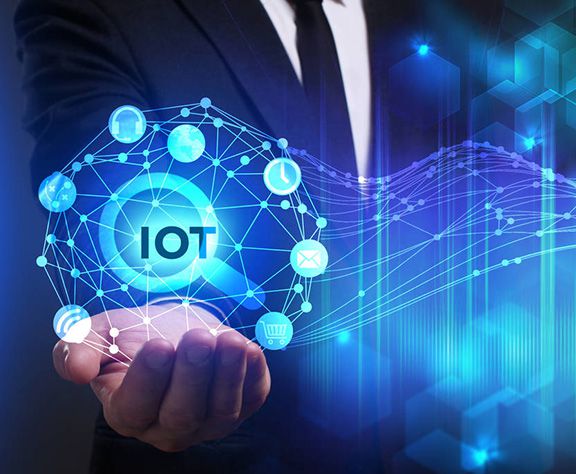The Internet of Things (IoT) is a term used to describe the growing network of online physical objects that are connected to each other and able to communicate and share information with us.

Computers and smartphones were the first devices to connect to the Internet. Over the past decade, our homes have become flooded with connected kitchen appliances such as smart TVS, kettles and fridges, as well as smart alarm systems, cameras and light bulbs. At the same time, we have become accustomed to working side by side with smart machines in the workplace, driving smart cars and even living in smart cities.
It is predicted that more than 43 billion devices will be connected to the Internet by 2023. They will generate, share, collect data, and help us leverage it in a variety of ways. So here's an overview of some of the key trends that will affect how we use and interact with these devices in the coming year
· Digital twins and enterprise metaverse
This is the confluence of two very important technology trends that will determine how industries and businesses use technology in 2023. For businesses, one of the most valuable applications of the metaverse will be to bridge the gap between the real and virtual worlds. By using data from IoT sensors, it will be possible to build increasingly realistic digital twins of many different systems - from manufacturing facilities to shopping centers. Business users will then be able to step into these digital twins through experiential metaverse technologies such as VR headsets to better understand how they work and how tweaks to individual variables might affect business results
We are already seeing this convergence in the retail space, where store planners can monitor foot traffic in real time and adjust displays and promotions to monitor the impact on customer behavior and ultimately revenue generation. In industrial Settings, it allows factory and manufacturing plant designers to test out different mechanical configurations, as well as highlight potential safety problems and predict when failures may occur.
· IoT Security
Iot devices make our lives easier and more convenient, but they also leave us vulnerable to new and various forms of cyber-attack. Simply put, the more connected devices we have in our environment, the more doors and Windows we have open to attackers. As the number of devices explodes in 2023 and beyond, companies, device manufacturers and security experts will step up efforts to combat "malicious actors" and minimize their access to our precious data.
In the United States, the White House National Security Council has said it hopes to have standardized security labels for manufacturers of consumer iot devices by early 2023. This will help buyers understand the risks that may arise from the particular device they introduce into their home. Many basic attacks, such as phishing attacks, rely on social engineering to trick users into revealing access details and can be stopped by taking basic precautions. The UK is also expected to introduce its own Product Security and Telecommunications Infrastructure (PTSI) bill.
In the Internet of Things, and particularly in the consumer domain, where the web can be the only thing standing between thieves and extremely sensitive personal data, spending on security measures is expected to reach $6 billion by 2023.
· Internet of Things Used in Healthcare industry
Healthcare is a huge area of opportunity for IoT technology, with the market for IoT medical devices set to be worth $267 billion by 2023
One of the biggest game changers is the use of wearable devices and home sensors that enable healthcare professionals to monitor a patient's condition outside of a hospital or doctor's surgery. This enables round-the-clock care while freeing up valuable resources for patients in need of immediate and direct care. In 2023, more people will be familiar with the concept of a "virtual hospital ward," where doctors and nurses will oversee the monitoring and treatment of patients in their own homes through sensors and telemedicine.
On the consumer side, wearables give everyone a better understanding of their health and fitness status, which will again help reduce the strain on the existing healthcare system, as we can seek help earlier when something goes wrong and better understand how diet and exercise affect our health.
· Governance and regulation of the Internet of Things
By 2023, legislation is expected to be in place in the European Union requiring makers and operators of smart devices to comply with stricter rules on how data is collected, where it is stored and what steps need to be taken to prevent data breaches. This is just one of a number of new pieces of legislation that we can expect to be implemented around the world. That means 2023 is likely to be the year governments begin to address the legal and social implications of the expanding Internet of Things. Eu legislation is also expected to address issues surrounding edge computing. Edge computing utilizes equipment designed to process data at the point of collection, rather than sending it back to a centralized cloud server for analysis. Meanwhile, in Asia, 2023 marks the culmination of a three-year plan by the Chinese government to enact policies that allow for widespread adoption of iot technology across the country. In China, as elsewhere in the world, the Internet of Things is seen as having the potential to drive large-scale business growth, but there is an understanding that it needs to evolve in a managed way to avoid potential conflicts with privacy concerns and individual rights.
Next: None
Copyright ©Zimton Technology (Shen Zhen) Co., Ltd All Rights Reserved